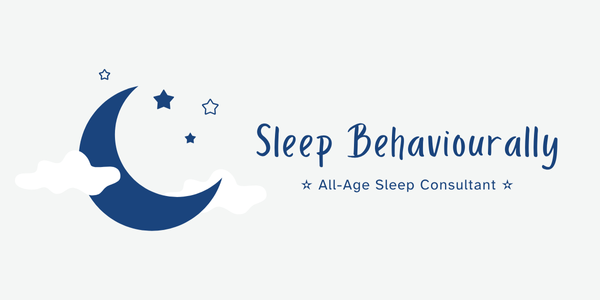As a parent, you want nothing more than for your baby to get the restorative sleep they need to grow and thrive. But navigating the world of infant sleep can feel like a daunting puzzle. You’ve likely heard the term “wake windows” whispered in parenting forums or mentioned by fellow parents, but what exactly are they, and how can they help you unlock the secret to perfect naps? This comprehensive guide will walk you through everything you need to know about wake windows, from the science behind them to practical tips you can start using today.
Wake windows are one of the most powerful tools in your parenting toolkit for establishing healthy sleep patterns. When you understand and respect your baby’s natural sleep rhythms, you’re setting the foundation for better naps, improved nighttime sleep, and a happier, more well-rested family.
What Are Wake Windows?
A wake window is simply the amount of time your baby is awake between one sleep period and the next. It starts the moment your little one’s eyes open and ends when they are back asleep for their next nap or bedtime. Think of it as your baby’s internal sleep timer. For newborns, this window can be as short as 30 to 45 minutes, while older babies and toddlers can comfortably stay awake for several hours. Understanding and respecting these natural rhythms is the first step toward establishing a healthy and predictable sleep schedule.
The Science Behind Wake Windows: Why They Matter
Wake windows are more than just a passing trend; they are rooted in the science of sleep. Two primary biological processes govern our sleep-wake cycles: the circadian rhythm and sleep pressure. The circadian rhythm is our internal 24-hour clock that regulates periods of sleepiness and alertness. Sleep pressure, on the other hand, builds the longer we are awake and dissipates as we sleep. For babies, whose circadian rhythms are still developing, sleep pressure is the primary driver of their sleep patterns. A wake window represents the optimal amount of time for sleep pressure to build. If a baby is kept awake for too long, they can become overtired, leading to a surge in cortisol and adrenaline—stress hormones that make it difficult to settle down and fall asleep. Conversely, if a baby is put down for a nap too soon, they may not have enough sleep pressure to fall asleep easily or stay asleep for a long, restorative nap. By paying attention to wake windows, you are working with your baby’s natural biology to promote better sleep.
Wake Windows by Age: A Guide for Every Stage
Every baby is unique, and their sleep needs will change as they grow. While it’s important to watch for your baby’s individual sleepy cues, having a general understanding of age-appropriate wake windows can be incredibly helpful. Here’s a breakdown of what you can expect at each stage:
| Baby’s Age | Expected Wake Window Duration |
|---|---|
| Birth to 1 month | 30 to 60 minutes |
| 1 to 3 months | 1 to 2 hours |
| 3 to 4 months | 1.25 to 2.5 hours |
| 5 to 7 months | 2 to 4 hours |
| 7 to 10 months | 2.5 to 4.5 hours |
| 10 to 12 months | 3 to 6 hours |
Remember, these are just guidelines. Your baby’s wake windows can even vary from one day to the next. The key is to remain flexible and responsive to your baby’s needs.
Recognizing Your Baby’s Sleep Cues: The Key to Perfect Timing
Learning to read your baby’s sleep cues is essential for successfully implementing wake windows. These subtle signals tell you when your little one is ready for sleep, helping you avoid the dreaded overtired state that can make naps difficult and short.
Early Sleep Cues (Time to Start Your Nap Routine):
Your baby is getting sleepy but is still calm and able to settle easily. Look for yawning, slower movements, decreased activity, staring off into space, rubbing eyes or ears, and becoming quieter or less engaged with toys and activities.
Late Sleep Cues (Getting Overtired):
If you miss the early cues, your baby may show signs of being overtired. These include fussiness or crying, arching their back, clenched fists, jerky movements, difficulty being consoled, and fighting sleep despite being clearly tired.
The goal is to catch those early sleep cues and begin your nap routine before your baby becomes overtired. When babies are overtired, their bodies produce stress hormones like cortisol and adrenaline, which actually make it harder for them to fall asleep and stay asleep.
What to Do During Wake Windows: Age-Appropriate Activities
Wake windows aren’t just about timing; they’re also about providing appropriate stimulation and care during your baby’s awake periods. The activities you choose should match your baby’s developmental stage and energy level.
Newborns (0-3 months):
During these short wake windows, focus on basic needs and gentle interaction. Feed your baby, change their diaper, and provide tummy time for physical development. Talk or sing softly to your baby, make eye contact, and offer gentle touches. Simple black and white books or toys can provide visual stimulation without overwhelming their developing nervous system.
Older Babies (3-7 months):
As wake windows lengthen, you can introduce more varied activities. Continue with feeding and diaper changes, but add longer periods of tummy time and supported sitting. Read colorful books together, play peek-a-boo, and offer age-appropriate toys that encourage reaching and grasping. Take short walks outside for fresh air and new sights.
Mobile Babies (7-12 months):
These longer wake windows allow for more active play and exploration. Encourage crawling and cruising by creating safe spaces to move. Practice new skills like sitting independently, clapping, and waving. Introduce finger foods during mealtimes, play simple games like pat-a-cake, and provide toys that encourage problem-solving and fine motor development.
Putting Wake Windows into Practice: A Step-by-Step Guide
Now that you understand the what, why, and when of wake windows, it’s time to put your knowledge into action. Here’s how you can start implementing wake windows to improve your baby’s naps:
Step 1: Observe and Track
Start by observing your baby’s natural sleep patterns for a few days. Keep a simple log of when they wake up, when they seem sleepy, and when they fall asleep. Note the duration of their wake windows and any patterns you observe. This baseline information will help you identify their current natural rhythms.
Step 2: Watch for Sleep Cues
Your baby will give you subtle signals when they are ready for sleep. Learn to recognize both early and late sleep cues, and aim to start your nap routine when you see those early signs. Remember, timing is everything when it comes to successful naps.
Step 3: Create a Consistent Nap Routine
A predictable nap routine can signal to your baby that it’s time to wind down. This doesn’t have to be elaborate or lengthy. A simple routine might include dimming the lights, changing their diaper, reading a short book, singing a lullaby, and then placing your baby in their crib while they are still awake but drowsy.
Step 4: Adjust Gradually
If your baby’s current wake windows don’t match the recommended guidelines for their age, make gradual adjustments. Shift nap times by 15-30 minutes every few days rather than making dramatic changes all at once. This allows your baby’s internal clock to adjust more easily.
Step 5: Be Patient and Flexible
It may take some time for your baby to adjust to a new schedule. There will be days when naps are short, schedules are thrown off by growth spurts or developmental leaps, or your baby seems to need different wake windows than usual. That’s completely normal. The goal is progress, not perfection.
Common Wake Window Challenges and Solutions
Even with the best intentions and knowledge, you may encounter some challenges when implementing wake windows. Here are some common issues and practical solutions:
Challenge: Short Naps (Less Than 45 Minutes)
Short naps are often a sign that your baby wasn’t tired enough when you put them down, or they became overtired. Try adjusting the wake window by 15-30 minutes in either direction. Also, ensure your baby’s sleep environment is conducive to longer naps—dark, cool, and quiet.
Challenge: Fighting Naps Despite Obvious Tiredness
This often indicates overtiredness. Try shortening the wake window and watching for earlier sleep cues. You might also need to adjust your nap routine to be more calming and less stimulating.
Challenge: Wake Windows Seem Too Long or Too Short for Your Baby
Remember that the recommended wake windows are guidelines, not rigid rules. Some babies naturally need slightly longer or shorter wake windows. Trust your instincts and adjust based on your baby’s individual needs and responses.
Challenge: Inconsistent Sleep Patterns
Growth spurts, developmental leaps, illness, and changes in routine can all affect sleep patterns. During these times, be extra flexible and responsive to your baby’s needs. Consistency will return once the disruption passes.
Challenge: Multiple Children with Different Schedules
If you have multiple children, aligning everyone’s schedules can be challenging. Focus on protecting the youngest child’s wake windows while finding creative ways to meet everyone’s needs. Consider quiet activities for older children during baby’s nap time.
The Long-Term Benefits of Respecting Wake Windows
Understanding and implementing wake windows offers benefits that extend far beyond just getting your baby to nap. When babies get adequate, well-timed sleep, they experience better emotional regulation, improved cognitive development, stronger immune function, and healthier growth patterns.
For parents, respecting wake windows means more predictable days, better nighttime sleep for the whole family, reduced stress around nap time, and increased confidence in reading your baby’s needs. You’ll also have more reliable breaks during the day to rest, accomplish tasks, or spend quality time with other children.
As your baby grows into a toddler and beyond, the foundation of healthy sleep habits established through understanding wake windows will continue to serve them well. Children who learn to sleep well early in life often maintain better sleep patterns throughout childhood.
Your Journey to Better Sleep Starts Today
Understanding and implementing wake windows can be a transformative experience for your baby’s sleep and your family’s well-being. By working with your baby’s natural sleep rhythms rather than against them, you’re providing them with the foundation they need for healthy development, emotional regulation, and optimal growth.
Remember that every baby is unique, and what works for one may not work exactly the same way for another. The key is to use wake windows as a guide while remaining flexible and responsive to your individual baby’s needs. Start by observing your baby’s natural patterns, learn to recognize their sleep cues, and gradually implement age-appropriate wake windows.
Be patient with yourself and your baby as you navigate this journey. There will be good days and challenging days, but consistency and understanding will ultimately lead to success. When your baby gets the quality sleep they need, everyone in the family benefits from better rest, improved moods, and more predictable daily rhythms.
The investment you make in understanding wake windows now will pay dividends for years to come. You’re not just improving naps; you’re establishing healthy sleep habits that will serve your child throughout their development. Trust the process, trust your instincts, and remember that every step you take toward better sleep is a step toward a happier, healthier family.




0 Comments